LOCKDOWN
Remote Leadership:
How the C-Suite is Working Through the Lockdown
The coronavirus forced half the world’s population into lockdown, causing many to embrace full remote working for the first time. So how has the C-suite adapted? We speak to executives from some of technology’s biggest companies to get their tips for lockdown productivity
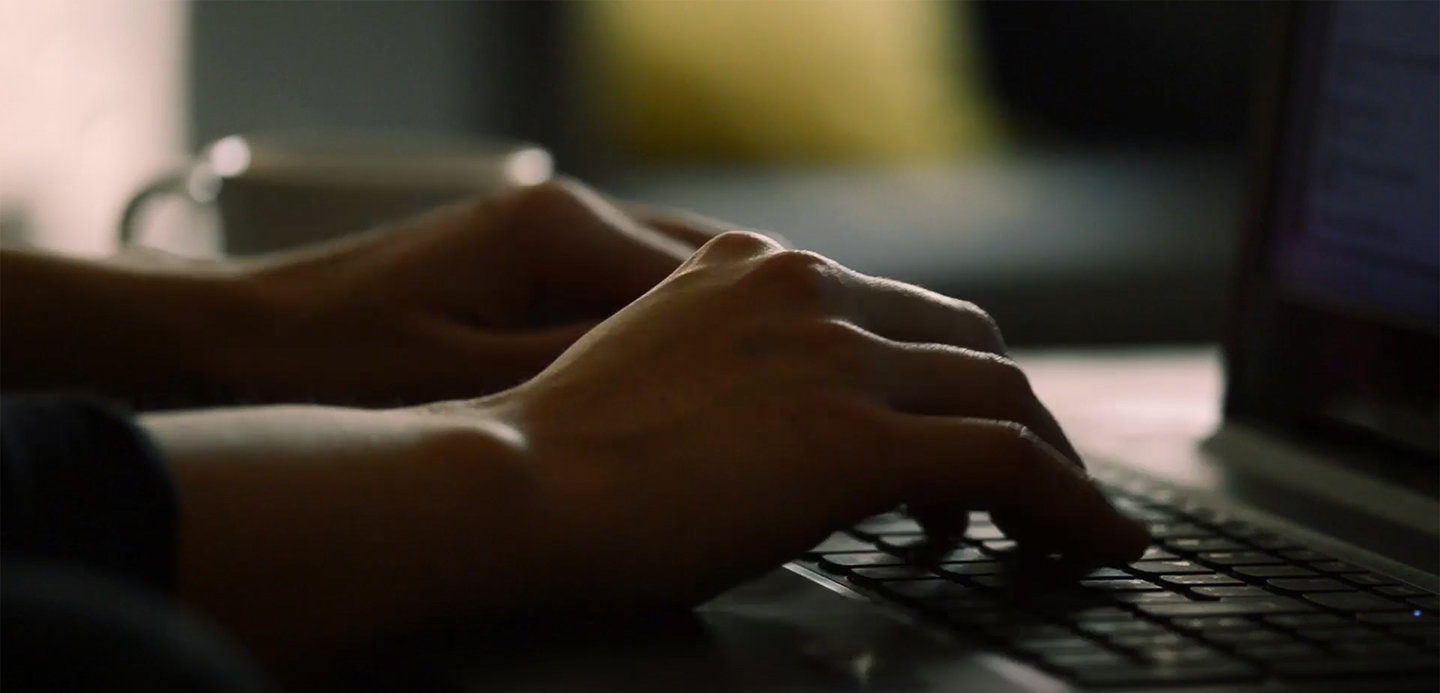
Teresa Dietrich, chief product officer at Stack Overflow: “We need to be flexible and relaxed on our expectations”

What does a typical remote working day look like for you?
I am up at 7am and follow my normal morning routine, just with comfy pants and no shoes.
I spend an hour before my meetings start with my coffee reviewing my emails, schedules and working on my priorities. This helps me feel prepared for the day ahead.
I am usually in meetings most of the day from 9am - 5pm but try to work some breaks in to stretch my legs and clear my head. At the end of my meetings, I walk away from my workspace for a couple hours for dinner, time on my rowing machine, a virtual pilates class and spend time with my husband.
I usually get back on the computer for two hours in the evening to focus on work that needs my focus and uninterrupted time to move forward. I live in an apartment in NYC so my husband (who also works in tech) and I have been trading workspace every few weeks for a change of scenery.
What tools are you using to carry out remote working? Are you a Zoomer, team Teams or something else?
We use Slack, Google Meet, Zoom and of course Stack Overflow for Teams. ChatOps and videoconferencing tools are great for real time conversations but are also a disruption for our team members whose work involves a lot of heads-down time.
Stack Overflow for Teams is great for asynchronous and enduring knowledge sharing and collaboration between colleagues. A lot of the same questions get asked repeatedly of our subject matter experts and moving those to the product saves a lot of disruptions and time waiting for a direct answer in chat.
What has been your main remote working challenge and how have you overcome it?
My biggest challenge has been creating separation from the work day and the rest of the day. I have tried to create a new daily work day routine by having a start to my day - coffee and catching up on emails and reviewing my schedule. By walking away from my workspace at the end of my meetings to get some physical activity and dinner with my husband, I am able to keep my workday from just being a nonstop stretch from waking up until going to bed.
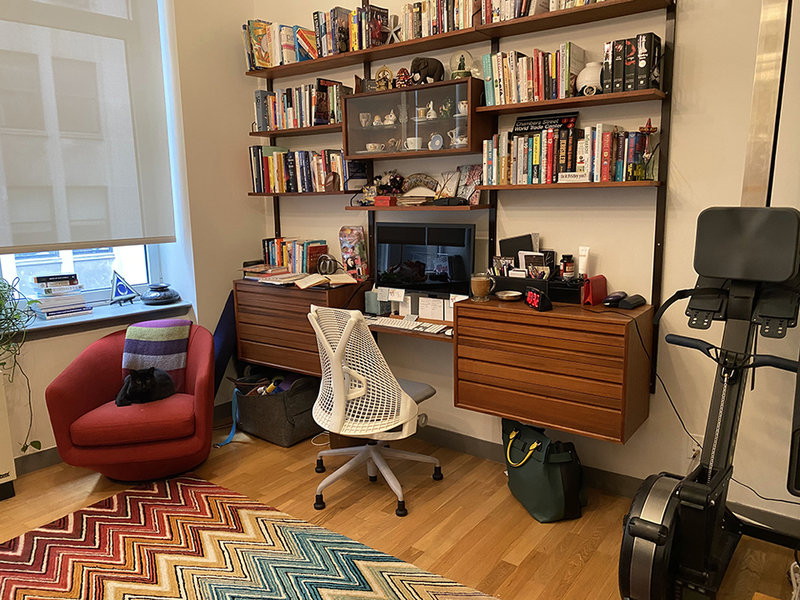
Post-pandemic, can you see you and your workforce working remotely more often?
My team is already 80% remote and all of Stack Overflow is 40% remote normally. I personally work from the office in NYC during normal circumstances but have taken to working remotely from our other home in California or while visiting family at least one week a month. With such a large percentage of the team working remotely, I think it's important for leaders to regularly have the same experience to better support and empathise with colleagues.
Top remote working tip?
Right now it's important to realise we are not all just working remotely but working remotely during an unprecedented, global disruption. As leaders we need to be flexible and relaxed on our expectations around productivity, availability, goals and engagement.
Building and maintaining relationships at a distance is more challenging and requires a bigger investment. We invest in our relationships by spending time on catching up with colleagues how they are really managing, using VC to get face time, and having social Slack channels and virtual get togethers.
Dave Camp, SVP of Firefox at Mozilla: “Make some time for unstructured socialising”

What does a typical remote working day look like for you?
It’s pretty straightforward. I do my best to stick to a morning routine – exercise, shower, coffee, a bit of unstructured news/twitter reading – and then I jump into my first video meeting. Sometimes that’s pretty early to meet with team members outside of the US.
I jump between meetings, Slack discussions, document reading/writing, and more Slack discussions. Once the shelter-in-place orders took place, my work days have ended more often than not with some sort of unstructured meetup with one of my teams. I try to keep 6pm-9pm-ish in my time zone for the family, and will check back in after the kids are in bed if needed.
What tools are you using to carry out remote working? Are you a Zoomer, team Teams or something else?
I rely heavily on Slack, Zoom, Google Docs, email, a good desk microphone, a sturdy keyboard and of course, the Firefox web browser.
What has been your main remote working challenge and how have you overcome it?
Missing out on unexpected conversations. I do my best to get some of that spontaneous discussion with people on Zoom and Slack, hopefully without annoying them too much.
Post-pandemic, can you see you and your workforce working remotely more often?
Mozilla was already largely remote going into the pandemic, with roughly 45% remote employees globally. This goes up to almost 70% in countries such as the UK. So I don’t know if we’ll see a large shift. As for me, I was remote coming into this – while I visited our offices regularly, I mostly worked from my home outside of Portland, Washington.
Top remote working tip?
Make some time for unstructured socialising with folks in your organisation. It’s easy to overlook the impact of hallway run-ins and lunchtime conversations on creativity and team cohesion. You have to be more deliberate about creating that opportunity remotely.
Joseph Carson, chief security scientist at Thycotic: “Your health, safety and comfort should be your number one priority”

What does a typical remote working day look like for you?
This depends on the day and varies depending on what tasks I have. Before I even open my laptop I tend to put down my thoughts first, questions that are on my mind or what I want to achieve that day. It is important to stay creative and this is one way I open my mind to new ideas. In the morning I spend an hour walking and listening to an audiobook, as for me, continuous learning is important to increase my knowledge and skills, we are life students. One of my recent favorites is the “The Cuckoo's Egg” by Cliff Stoll.
I then focus my mind on the tasks at hand which usually means revisiting my priority list and choosing the top 3 things I can get done well. The most important thing when working remotely is to stay focused, over-communicate and continuous focus on the top priorities.
If my schedule has anything that requires privacy then I mark it down where I should be located that is private or quiet. Once I know what must be completed I get stuck into execution. My mornings are typically quieter as working for a US-based company most of my communications happen in the afternoon or evening.
So my days are usually spent getting things done such as research, testing ideas, writing content, preparing for webinars, reading about recent cyber incidents. In the afternoon, I communicate with colleagues making sure we are on track, any changes to the schedule or plans to stay focused and maintain the same priorities.
So working remotely you really plan your day into 3 categories, planning and preparing on what must get done, getting stuck into getting things done and finally communicating with peers to ensure everyone is going in the same direction. Over-communication is important and focusing on 3 priorities will help you get things done.
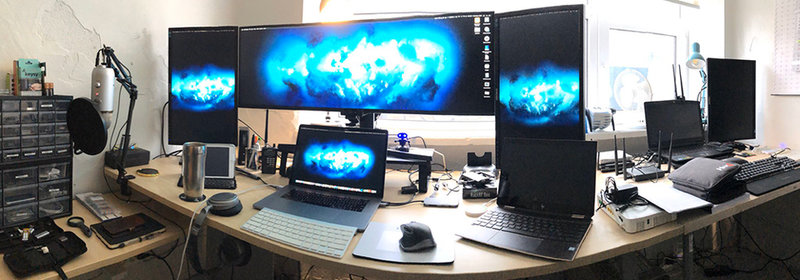
What tools are you using to carry out remote working? Are you a Zoomer, team Teams or something else?
This really depends on what tasks I’m working on. For most day-to-day tasks that are not sensitive then Zoom tends to be ok as long as you are using the security features available, I also use GoToMeeting and GoToWebinar often or Microsoft Teams depending on the needs.
What has been your main remote working challenge and how have you overcome it?
My main challenge is getting quiet time, in the past when working remotely no one else was home but now everyone is at home meaning the noise level has increased so staying focused sometimes means putting on those noise cancelling headsets.
Post-pandemic, can you see you and your workforce working remotely more often?
At Thycotic we have always embraced remote working. Our technology and solutions enable us to maintain access to our applications so this is kind of the normal experience for us. However, what is definitely changing are tradeshows since it is difficult to hold large events, so we might see more digital based events in the future.
Top remote working tip?
My top tip for working remotely is, if you can, take a walk before you start the day and choose a comfortable working location to do your job. Your health, safety and comfort should be your number one priority when working remotely.
Celia Fleischaker, chief marketing officer at PROS: “Working parents have an incredibly hard job”
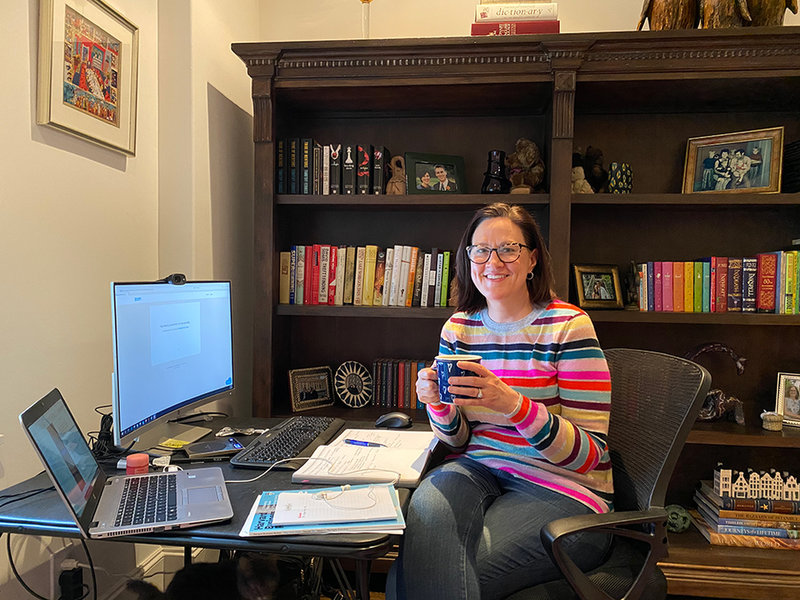
What does a typical remote working day look like for you?
The first thing I do is a quick scan of email to see if something needs immediate attention. I then get ready for the day. I firmly believe that you need to get dressed for work. No suits of course, but no sweats either. After a short block of focused time to work, the balance of the day tends to be filled with video calls, IMs, and emails.
What tools are you using to carry out remote working? Are you a Zoomer, team Teams or something else?
At PROS, even prior to when Covid-19 hit, we had a very flexible approach to where people worked, and that set us up well for the transition to a 100% virtual team. I spend most of my day in Zoom calls and on Teams.
What has been your main remote working challenge and how have you overcome it?
I worked remotely for 15+ years in prior roles, and believe with the right level of communication, you can effectively lead an organisation without being in the office with the team. You need to be very intentional with your communications. Building a relationship with a co-worker will require more effort, but it is very possible. Make time to connect both for formal 1:1s, but even less formally for virtual happy hours or coffee chats.
Post-pandemic, can you see you and your workforce working remotely more often?
Yes, I think so. Covid-19 has accelerated the move to digital in every sense. We had a lot of flexibility pre-pandemic and I think that flexibility will increase after. The nature of our business is also very virtual. Centred around AI, and helping businesses across different industries such as manufacturing, distribution, and travel to embrace and maximise the power of digital selling.
Top remote working tip?
Make sure you maintain a division between your work and personal life. It is easy to lose that when you are working at home. I make sure I step away from my laptop and keep a reasonable balance between work and family. On the flip side, during the pandemic, it is important to recognise that this isn’t always possible. With schools out, working parents have an incredibly hard job. Managers need to recognise flexibility is required now more than ever as people navigate working from home during Covid-19.
Russell Haworth, CEO of Nominet: “You can’t over-communicate”
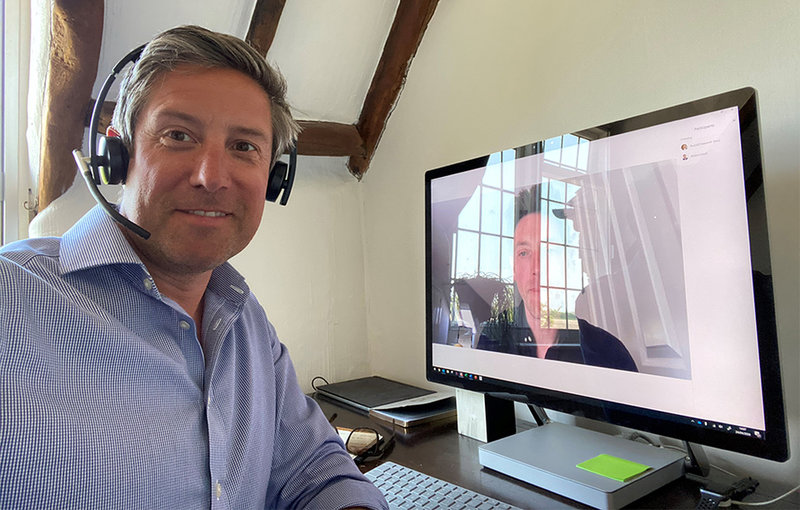
What does a typical remote working day look like for you?
It starts early, like normal – around 5:30am – my alarm clock is the dog!
I do some exercise before work – normally a dog walk and a stint on the Peloton bike (we have a corporate subscriptions that all staff can tap into for a range of classes – you don’t need the actual bike to get the most out of it – albeit I do have a bike in my garage!).
I like to catch up on news, look at the day ahead and get in touch with the leadership team.
I spend most of my day in meetings – like when in the office. We’ve used videoconferencing for a while, so the technology per se is not a problem. But it’s hard to spend a whole day that way, so I’ve moved my meetings to have 25 or 45 minute meetings as standard – so everyone has time to walk around, get a break from the screen. I’ve also blocked free time in the calendar so I can actually do some work or take unscheduled meetings.
As a CEO, communicating with the team is really important to me. But with remote working, it is even more important to spend the time. I’m communicating more via video, to keep things as personal as possible. So today I’ll be recording a weekly vlog.
What tools are you using to carry out remote working? Are you a Zoomer, team Teams or something else?
We use a number of platforms to communicate, and key to using technology is ensuring our staff and systems are secure. Our standard ‘go to’ is Cisco Webex.
Regardless of which platform you are using, be it Zoom, Webex or others, the mantra must be ‘user beware’. Recent reports have shown that criminals are trying to harvest Cisco WebEx credentials, for example, by sending out a security warning for the application. It seems these phishing attempts were launched rapidly following lockdown measures, by criminals eager to make money off those unfamiliar with the platforms they are now reliant on.
Fortunately, our CISO keeps all staff aware of the current trends in threats and attacks, helping us all remain vigilant.
What has been your main remote working challenge and how have you overcome it?
A key challenge for me is ensuring that my team is ok – and for me that is everyone. The transition from office life to home-office life is not a straightforward one when it is every day, and everyone is at home with you or you are entirely alone.
There are of course the small (quite literally) disruptions such as having your children interrupt calls, but also needing flexibility to support family be it home schooling or delivering shopping and medication – and we are wholly accepting of this. It’s life as we currently know it, and we are all in the same boat. As CEO – the main thing is making sure that you are connected with your team, in listening mode and responsive to ensure your people and the business are getting the support that’s required.
Post-pandemic, can you see you and your workforce working remotely more often?
Yes, I think so – the workforce and culture around what a ‘normal’ working day looks like will have changed drastically. Coronavirus has accelerated the work from home trend and has made many companies realise they can just as well enable their employees to work at home effectively as they can in the office.
As we are CNI we wouldn’t choose to work remotely full time – and nor would we want to as we love our office culture – but if staff need to work flexibly then that option will continue to be there, as it always has been.
Top remote working tip?
Take regular breaks. I was getting headaches looking at the screen via videoconferencing and the earphones felt like I’d been in a rugby scrum by 5pm. Getting out of the office to walk around the garden and clear the head before the next call has really helped.
You can’t over-communicate. Do it more than you think you should, and make time for it, even when really busy.
Ask how people are doing. We always do this at Nominet but are doing it more often now so we can see if the teams are feeling supported, and to flush out any problem areas that the remote working is causing for people. We’ve been as flexible as possible, and have loads of support available, but some people are – understandably - finding it hard juggling caring responsibilities and work. If so, we want to know so we can pitch in to help.
Take a moment to lighten the mood. Catch-ups should not just be for the business of the day either, but team catch-ups where you share the odd funny meme perhaps, a picture of your latest puzzle triumph, neighbourhood video challenge or even online quiz tips. It works for us!
Bridget Kenyon, EMEA CISO at Thales: “Leave your camera off at all costs”
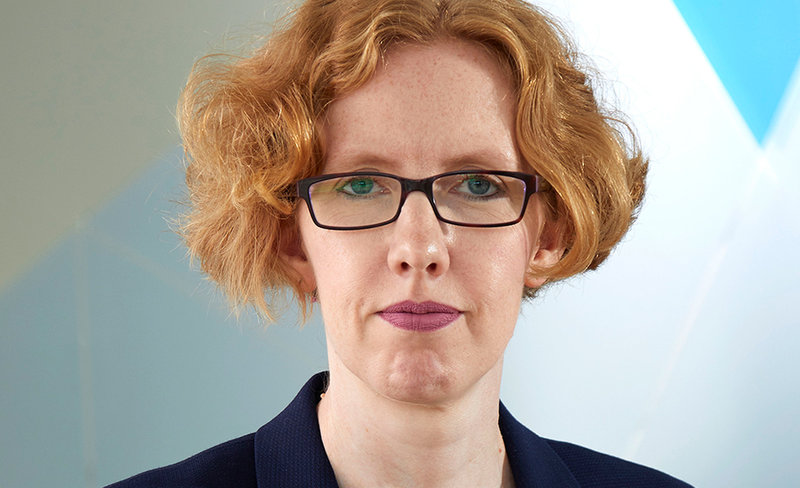
What does a typical remote working day look like for you?
It is important to keep a consistent schedule when working from home; I wake up for breakfast at 7am, check emails by 8.30am and aim to log on properly by 9am, then break for lunch around 12:30pm. I try to sign off at 5pm most days and then go for a long walk.
I have discovered that working from home makes my days busy and go more quickly, so I have started using a “bullet journaling” system to help me get the right things done in the right order.
What tools are you using to carry out remote working? Are you a Zoomer, team Teams or something else?
Working remotely has certainly upped my online meeting count. Personally, I have no real preference regarding usability; they all seem to work well when not overloaded. However, it is vital to think about the sensitivity of what you are discussing, and the security capability of each service, and take that into account when picking a conferencing solution.
What has been your main remote working challenge and how have you overcome it?
From a personal point of view, the main challenge has been maintaining ad hoc collaboration. When you are in an office environment, it is easy to see if someone is at their desk and able to chat for five or 10 minutes about something. Things are a little trickier when working from home. You can certainly see if someone is online, but they may be wrapped up in something, or unable to help out as their device has crashed.
Another thing which we have had to keep in mind are the different security challenges when remote working. Whilst our IT systems may have been robustly protected in the office, varying remote working set-ups could open a backdoor to our corporate network. Staff at home can then be targeted by hackers, who see them as a way to gain access to the company’s network. Some of the precautions we take include ensuring that staff can only access corporate resources via an approved encrypted VPN; we also train staff to avoid clicking on links in suspicious emails, and to not open files they are not expecting.
Post-pandemic, can you see you and your workforce working remotely more often?
The post-pandemic world must be different to the way it was before Covid-19; after all, ‘pre-pandemic’ is not what we aspire to, is it? The changes will be shaped by what is necessary to prevent another pandemic happening and will be influenced by local cultural norms, even in companies with a global footprint. It’s also vital to ensure that remote working remains secure, even when it is no longer such a novelty.
In my team in the UK, we have adapted well to remote working, but some teams in other countries love the office environment, and will want to reclaim the social, friendly aspect of sharing a physical space with colleagues for eight plus hours every working day.
Three key points to bear in mind: first, companies have now made major investments in enabling remote working, including additional security solutions, and they will not want that to go to waste; second, many people have now proved that they really can do their job from home, and won’t want to go back to hours of travelling each day; and third, it costs a lot of money to maintain physical offices.
We will have to wait and see how it pans out over the next couple of years.
Top remote working tip?
My top tip is to leave your camera off at all costs, as being on video can be utterly draining when in a meeting, with that feeling of ‘always being watched’; and you can’t actually engage visually with the other images, as you can never make eye contact. Also be aware that people can see more than just you – what sensitive papers and other material are on camera?
We are all starting to realise that the video aspect of a conference call/meeting can negatively affect concentration and does not improve the quality or outcomes of the interaction. In fact, my company has been quite active in remote working for years (since we have offices all around the world, and do a lot of international collaboration) and I noticed early on in our adoption process that cameras being switched off was becoming the norm. In fact, if someone has their camera on, these days, people will tell them about it, as it is assumed to be an accident (and it almost always is!).
Gavin Poole, CEO of Here East: “Make sure you are available for your team when they need you”

What does a typical remote working day look like for you?
When we made the decision to work from home, the transition was relatively simple other than missing larger screens (and the team!) It’s essential to have a place where you can get through work and host meetings with as little disruption as possible.
Having said that, we are now homeschooling as well, so safe to say that the structure of ‘normal’ working day has changed. The day usually starts with checking in with the team, which then dictates how the rest of the day plays out before circling back with everyone at the end of the day.
What tools are you using to carry out remote working? Are you a Zoomer, team Teams or something else?
The tech industry has had to roll-out their services at an unprecedented rate in order to keep everyone connected during this time. For the Here East team, we have access to most platforms so that we can talk to our customers, stakeholders, owners and suppliers in whatever medium works best for them.
Slack and Zoom have become preferred but for others Teams, Skype and Webex are being utilised. They work really well for keeping in touch and all serve different purposes however, at times, keeping it traditional and ‘old fashioned’ conference calls or voice calls work well. As a team we are very conscious about respecting privacy and parachuting into someone's home may not be appropriate.
What has been your main remote working challenge and how have you overcome it?
Here East works as a catalyst for collaboration and many of its strengths lie within the day-to-day interactions with our customers and stakeholders. The way that we collaborate has changed drastically during this time and at times the remoteness increases the time required to get things done. But through the use of technology, we have worked through this quickly and adapted – it’s by no means a solid replacement for face-to-face check-ins and idea sharing, but it works.
We have been focussing a lot of our time on collaborations and projects that have been happening across the campus (virtually) in response to Covid-19 although now we are very much focussed on how to support our customers' return and understanding their own needs in the future.
Post-pandemic, can you see you and your workforce working remotely more often?
There is no doubt that this pandemic will change the way that we work. Here East is all about our community – and having people on campus will be the norm in the future. The interaction across campus and the chance meetings to catch up with each other is at the heart of what we do. Ultimately, we provide an operational service to our customers on-site which does require a physical presence and team on-site.
Top remote working tip?
As a leader, make sure you are available for your team when they need you. Previously it was easy for anyone to pop their head into the office and now they can’t. Making sure they know they can call up or use their preferred channel (Slack, email, text, WhatsApp) and they’ll still be heard is incredibly important and provides reassurance where at times, distance can create anxiety.
Maddie Fox, chief people officer at Lantum: “Allow yourself time for breaks”
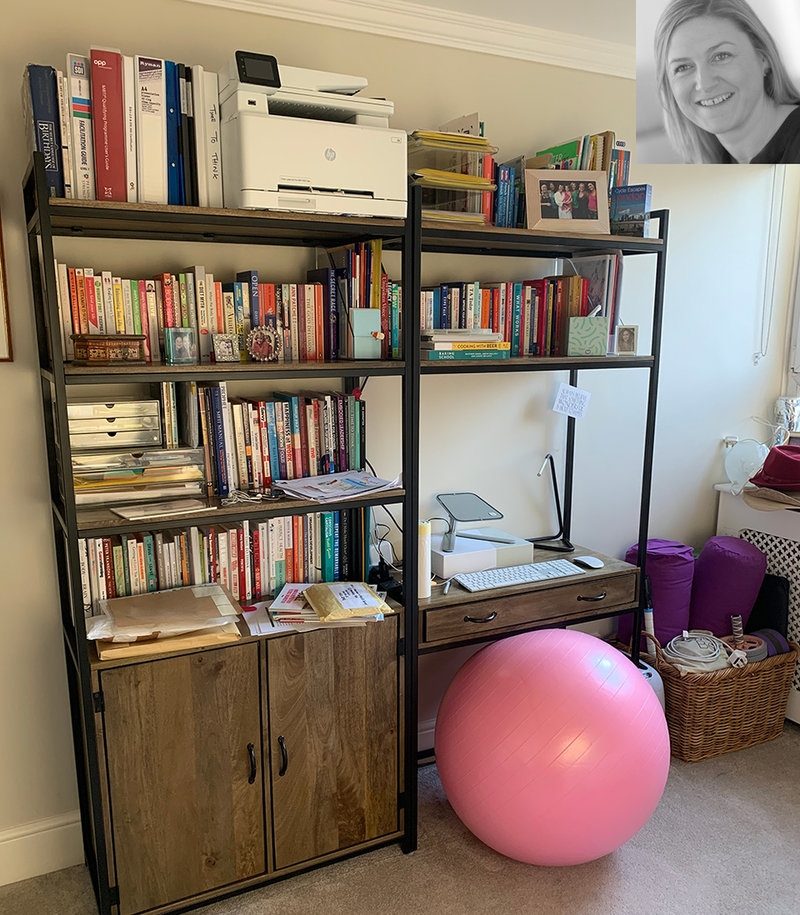
What does a typical remote working day look like for you?
It’s important to keep up a routine while working remotely, so my day begins with getting up early and following my usual morning routine – minus, of course, travelling into work. Making use of video calling technology has been vital in keeping up our communication, and my days are often busy with regular meetings or check-ins. One of the biggest challenges of remote working is being able to switch off, so I find it very important to plan my day ahead and schedule in times to have a break.
What tools are you using to carry out remote working? Are you a Zoomer, team Teams or something else?
At Lantum, we have mainly been making use of Google Hangouts, email and Slack, although every team uses the tools that work best for them. Although this technology has been vital to keeping up our communication, we’ve found it equally important to make it clear which channels to use for each type of communication, so that teammates don’t feel overwhelmed and under pressure to keep everyone updated on multiple platforms.
What has been your main remote working challenge and how have you overcome it?
As a company we have been fortunate in many ways. All our staff have laptops and from a technology point of view, we have made the transition to remote working swiftly and effectively. The biggest challenge I have faced is how to set up clear rules of communication.
It’s easy to feel pressure to be online all the time and prove how hard you are working, but through establishing rules with your team and setting the example that it’s okay to take breaks, it is possible to create a culture where you communicate what you are doing without the pressure to be online all the time.
Our social committee has been amazing at keeping up the team connection so that everyone feels part of the team and empowered to be honest about how they are coping. This has been through moving social events such as pub quizzes online, but also through the introduction of a fortnightly pulse survey to check in on people.
Post-pandemic, can you see you and your workforce working remotely more often?
In short, yes. Like many companies, we were apprehensive about the team working remotely, but the way we have adapted and pulled together demonstrates how productive we can be even while all working from home. It would be difficult to completely return to normal after the pandemic, and I think we will see flexible working become much more normal.
However, I would say that it’s a different situation entirely to work from home a few days a week than to live and work through a pandemic, which is having an enormous impact on people’s lives and mental health. This has completely proven that businesses can and should offer more flexible working, but we shouldn’t expect this situation to be entirely representative of what flexible working from home after the pandemic would look like.
Top remote working tip?
Create structure in your day and allow yourself time for breaks. Communicate with your team so they know what is going on, but stick to your schedule so that you don’t feel under pressure to be online at all hours of the day.
Back to top